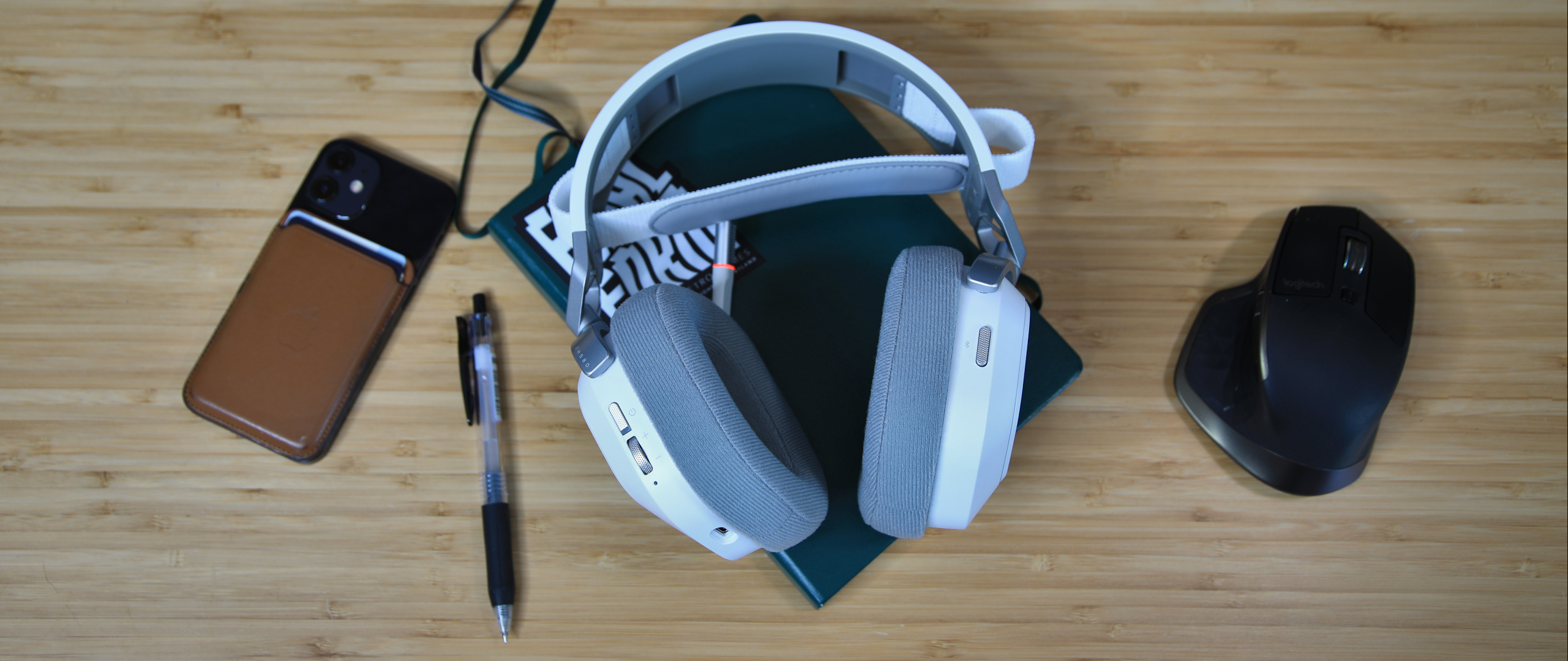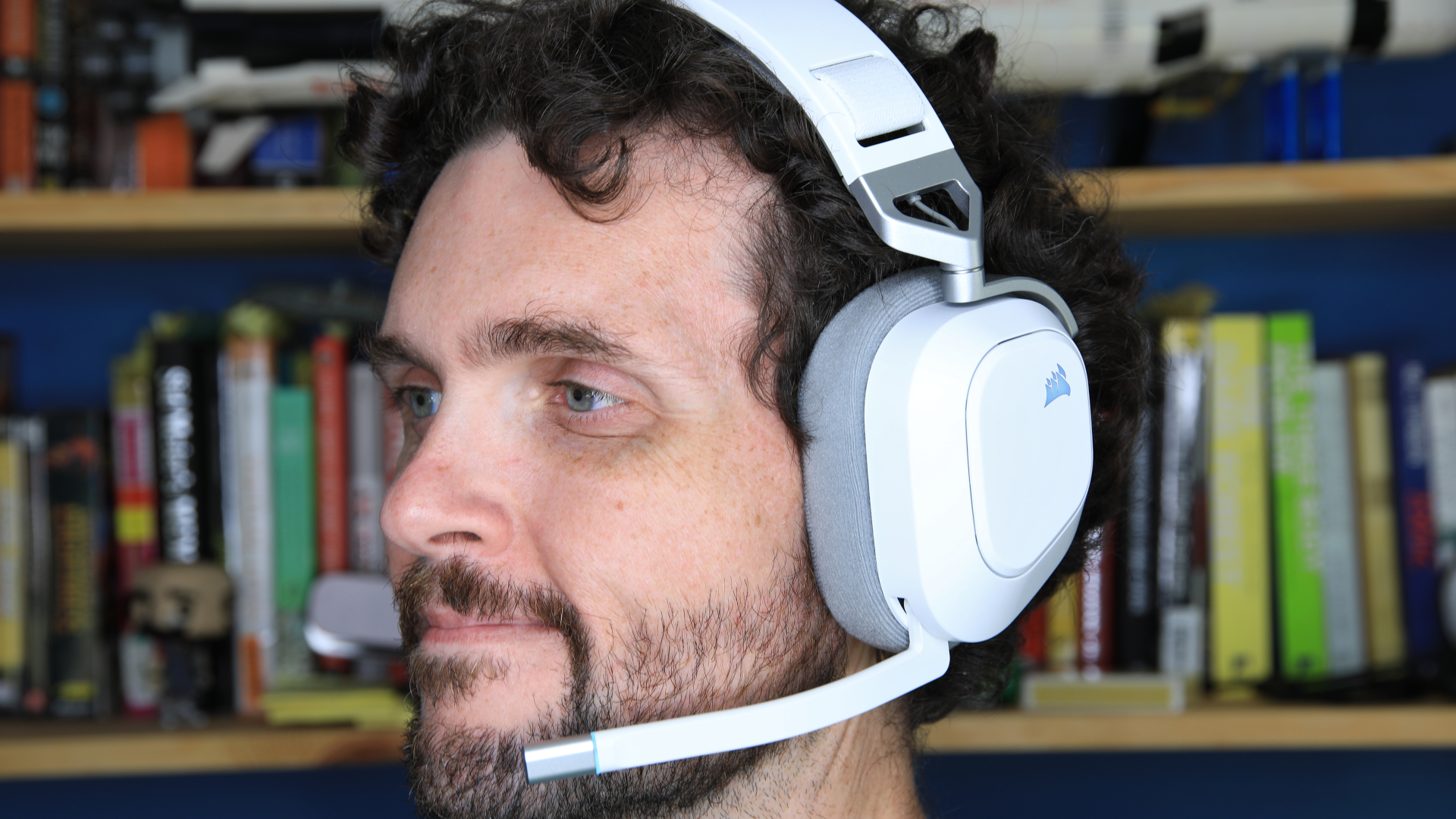Tom's Hardware Verdict
Corsair’s HS80MAX Wireless is a great choice for surround sound gaming and day-to-day use.
Pros
- +
Attractive, comfortable design
- +
Long battery life
- +
Good surround sound in games and movies
- +
Excellent microphone
Cons
- -
Music can sound close and narrow
- -
No Xbox support
Why you can trust Tom's Hardware
Corsair’s HS80 Wireless gaming headset arrived in 2021 to strong but mixed reviews, and was followed by the wired HS80 RGB. Our review of the HS80 RGB, which gave the headset four out of five stars, praised its build quality, design, and overall audio performance, but took issue with its inflexible connectivity, which only supported PC and Mac — not quite one of the best wireless gaming headsets around.
Now, Corsair has the solution: the HS80MAX Wireless. It’s broadly similar to the HS80 Wireless and HS80 but improves connectivity. The PlayStation 5 is now compatible with the headset’s 2.4GHz wireless dongle, and Bluetooth joins the party with support for iOS, Android, and Nintendo Switch. This bumps the price up to $179.99, up from the HS80 Wireless’ $149.99, which seems a fair price for the improvement in versatility.
Design and Comfort
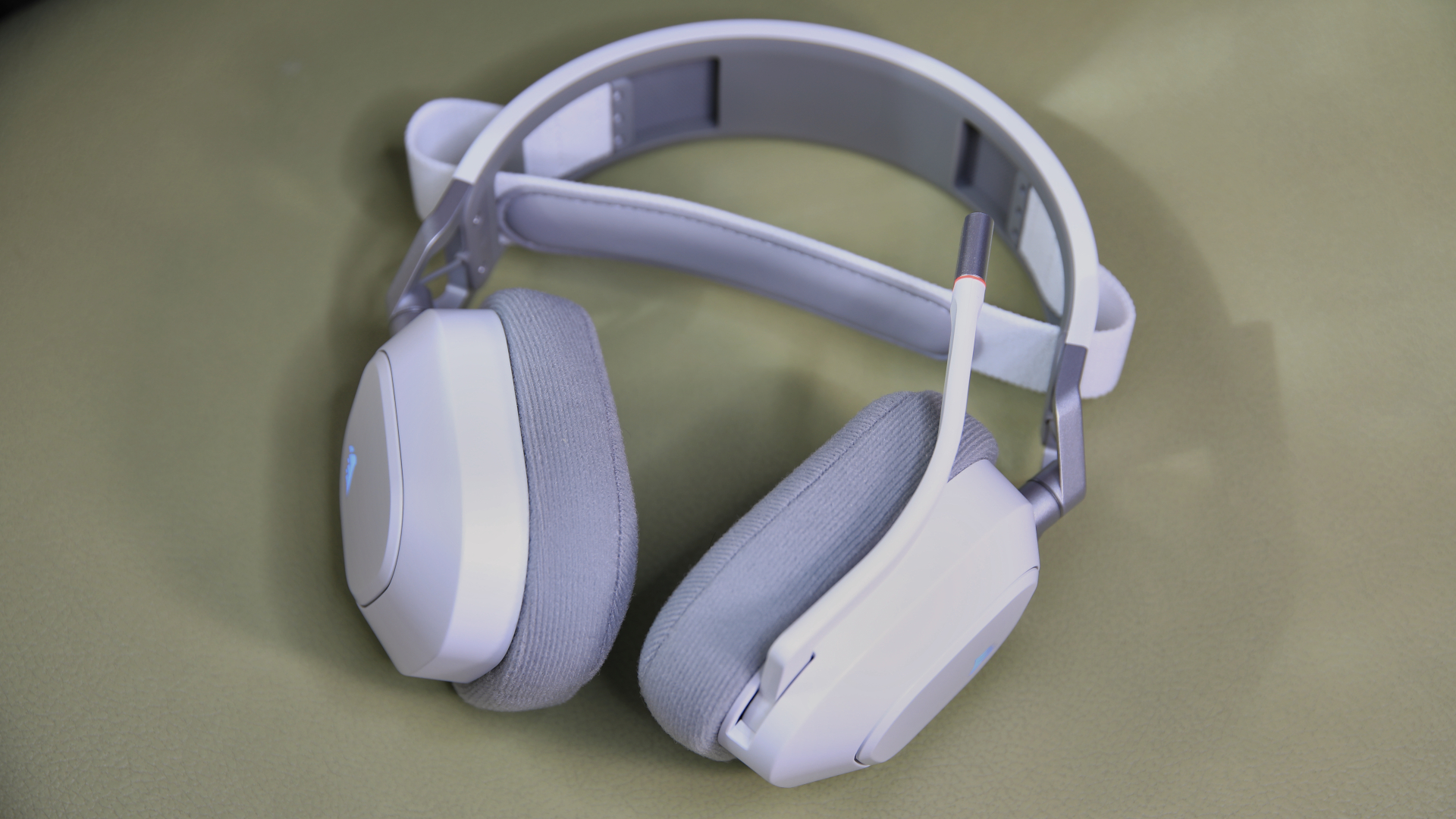
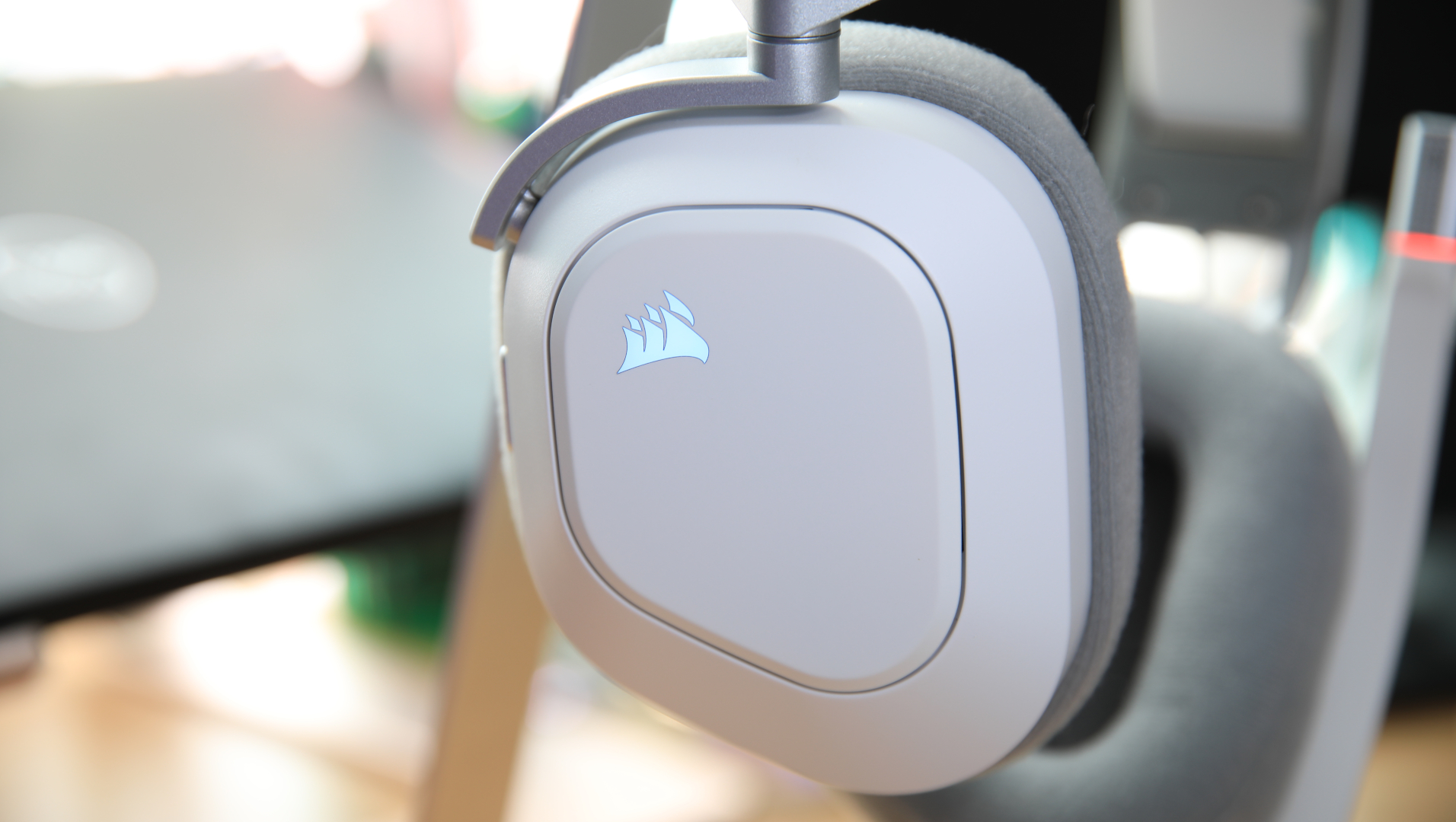
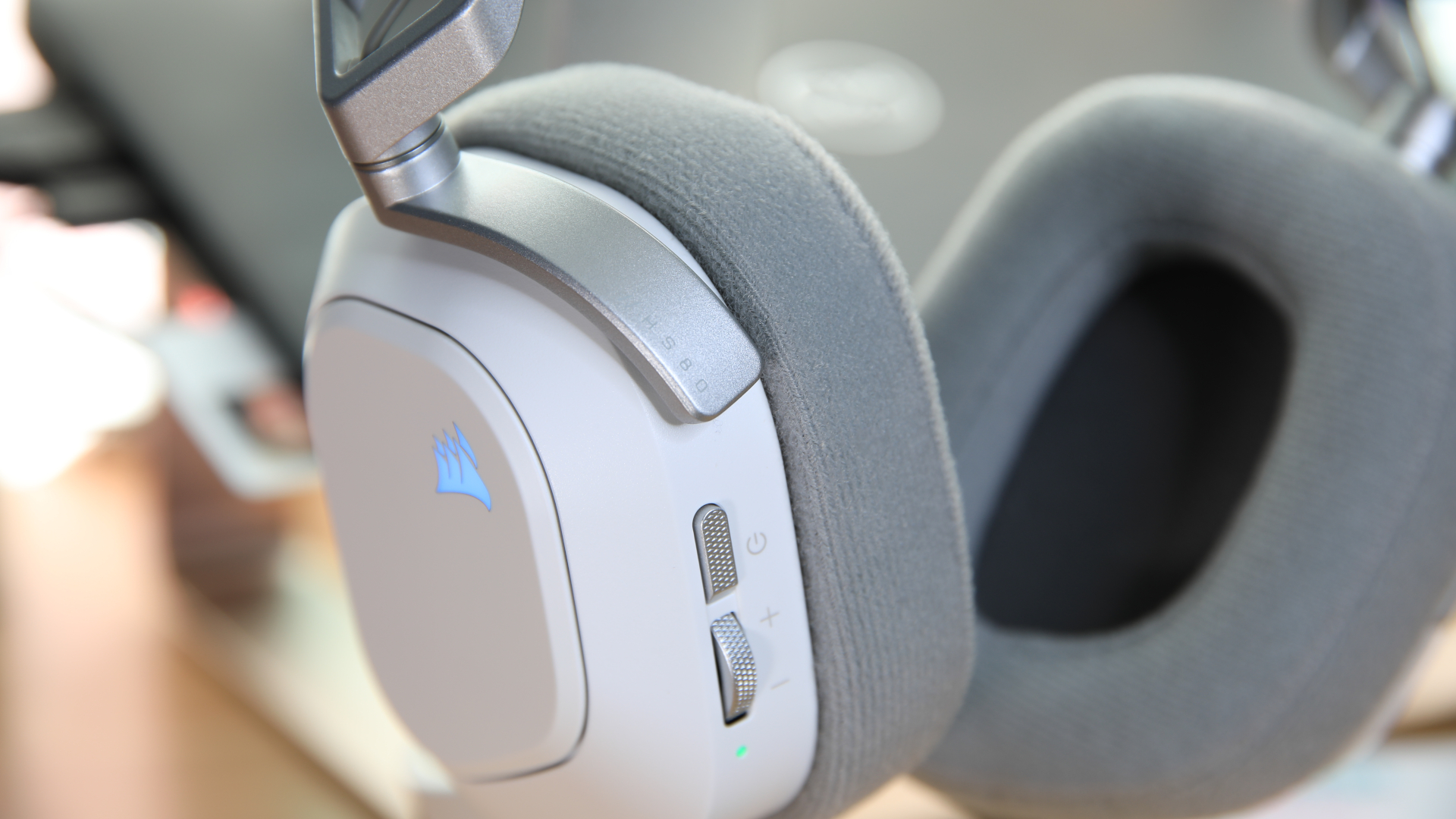
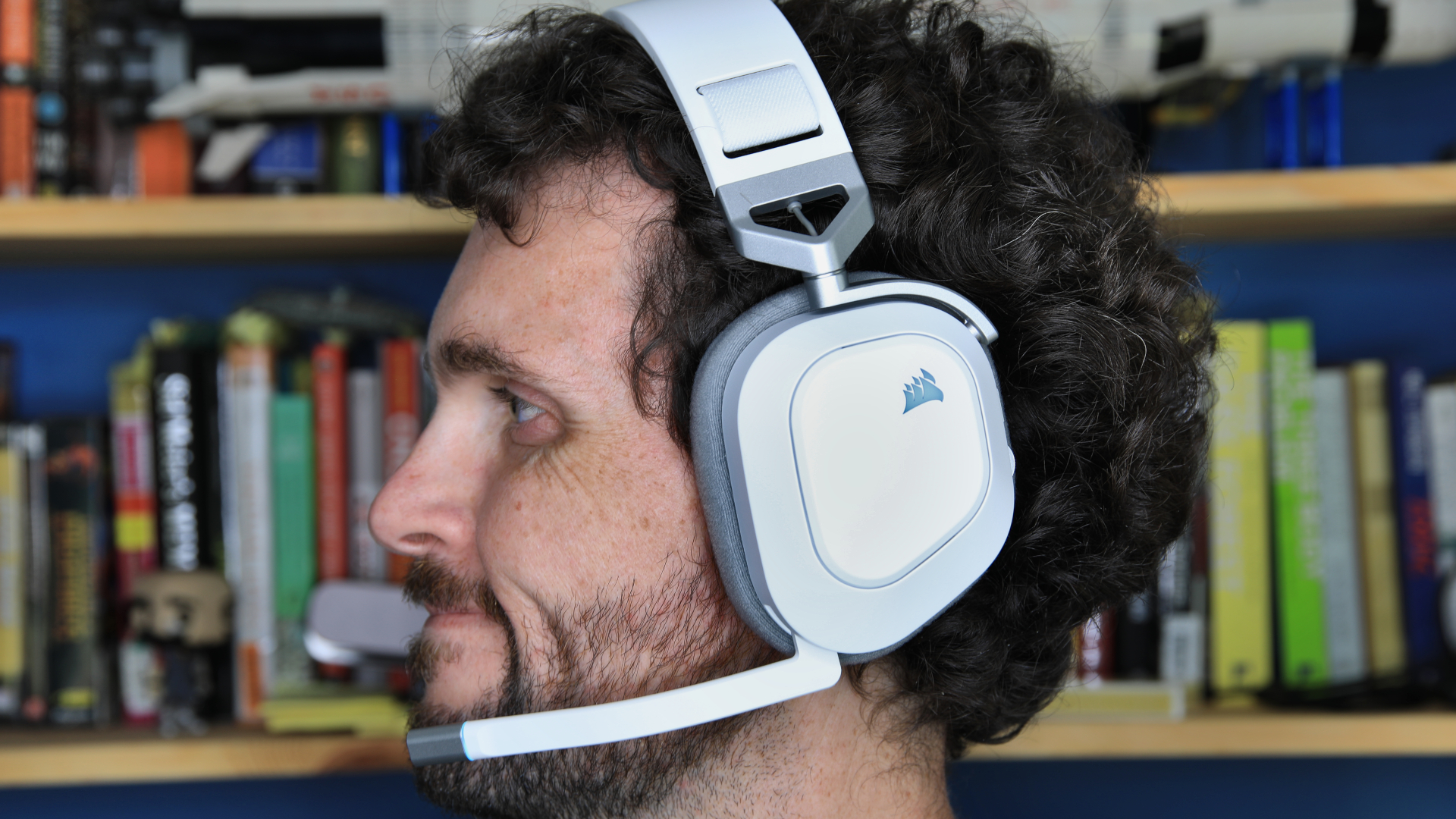
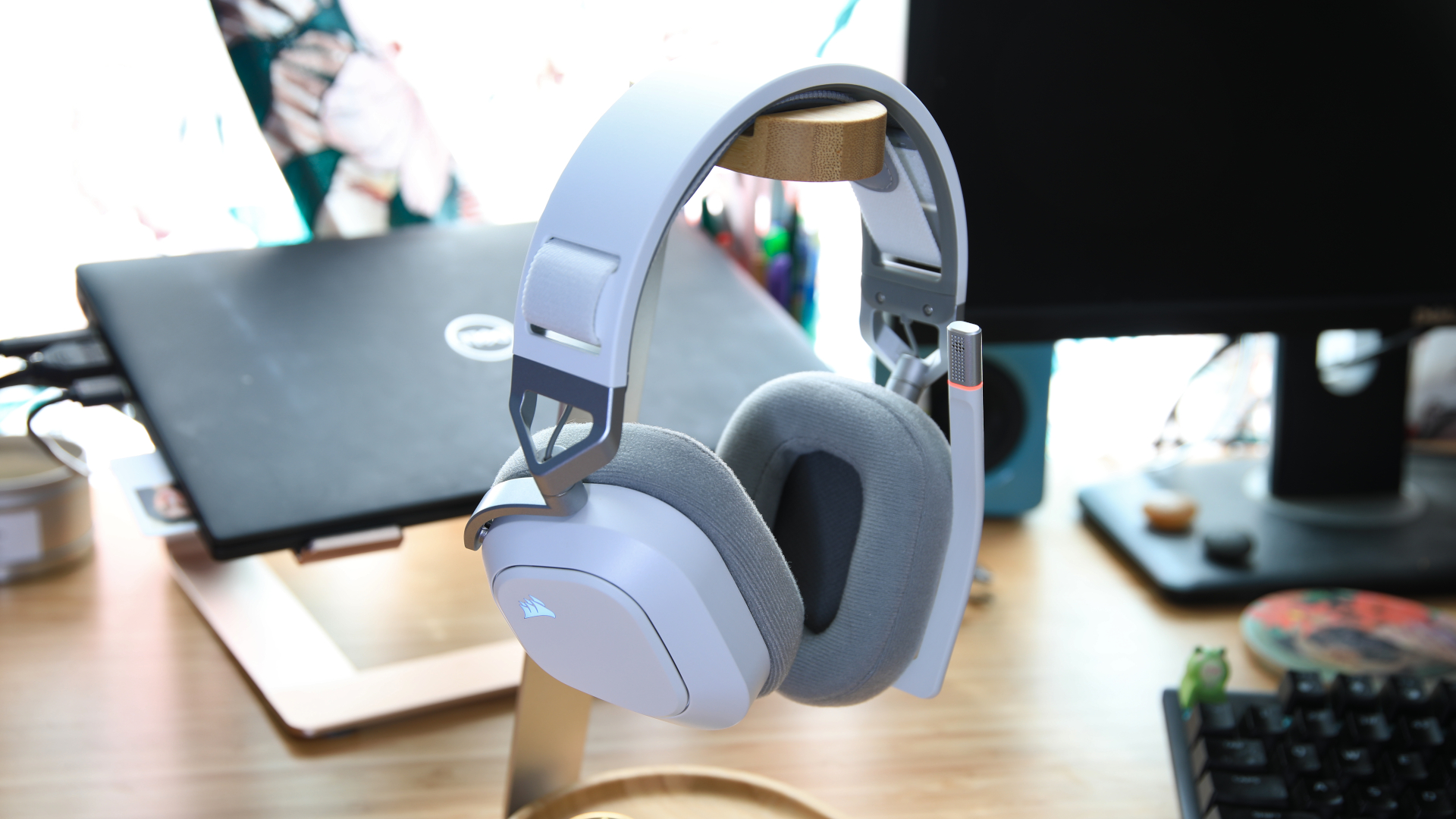
Corsair’s HS80MAX Wireless struck a soft, inviting, modern profile that looked fantastic in a variety of home office and gaming setups. The white model, which I received, appears friendly and inviting: a matte black model is available for those with more reserved tastes. No matter the color you choose, the HS80MAX’s design is defined by rounded edges and tapered shapes.
Build quality is good but not exceptional. The hinges which connect the earcups to the head strap are metal, but plastic dominates the rest of the design. That’s not a surprise given the headset’s price point: I can’t immediately think of similarly priced competitors with significantly more durable materials. Alternatives like the Beyerdynamic DT 900 Pro X are in another league, though way more expensive.
The Corsair HS80MAX has RGB lighting but, like the rest of the headset, it’s subtle. Lighting is only available in a few locations such as the Corsair logos on the exterior of each earcup and the microphone. I liked this approach, but I’m also not a fan of RGB lighting. Those who prefer more LED flair might be disappointed.
The power and volume buttons lurk around the rear of the left earcup, while the Bluetooth pairing button is on the right. The buttons activate with a firm, tactile click, and they have a textured surface that’s distinct from the material around them. The headset also has a USB-C port on the left earcup and ships with a six-foot USB-C cable in the box.
Comfort was a highlight, as the Corsair HS80MAX has thick, substantial padding covered in supple, pleasant fabric. The headset’s size is adjusted with a simple velcro strap on the headband. I have a big head that can challenge some headsets, but the HS80MAX managed to accommodate my dome on its largest setting.
Get Tom's Hardware's best news and in-depth reviews, straight to your inbox.
The ear cups also fit nicely over my ears. I eventually felt a touch of pressure after wearing the headset for several hours, but this occurs with nearly all headsets I use (big head, remember?) — the Corsair HS80MAX was more comfortable than most. The Logitech G733, for instance, was too small for my head, and quickly became uncomfortable.
While the Corsair HS80MAX is enjoyable in most situations, the fabric wasn’t especially breathable, and the headset felt warm on my ears after a couple hours of use in an air-conditioned room. I expect they wouldn’t be a great choice for gaming in a hot or humid environment.
The Corsair HS80MAX’s overall design and comfort left me impressed. They fit well on my head, stayed in place, and caused little strain after several hours of use. I’d be more than happy to use them as my “daily driver.”
Specs
| Driver Type | 50mm Neodymium |
| Impedance | 32k Ohms @ 1 kHz |
| Frequency Response | 20Hz - 20kHz |
| Design Style | Over-ear headset |
| Microphone Type | Omni-directional, attached |
| Connectivity | USB-C, 2.4GHz low-latency Wireless (via adapter), Bluetooth |
| Weight | .77 pounds |
| Cord Length | 6 foot USB-C |
| Battery Life | Up to 65 hours wireless, 130 hours Bluetooth (manufacturer claim) |
| Lighting | Corsair iCue RGB |
| Software | Corsair iCue |
| MSRP / Price at Time of Review | $179.99 / $179.99 |
| Release Date | Aug. 10, 2023 |
Audio Performance
The Corsair HS80MAX Wireless packs 50mm neodymium drivers. It also has support for Dolby Atmos and Atmos Spatial Sound, which holds hope for surround sound performance. With that said, it doesn’t offer 5.1 or 7.1 virtual surround.
First up, music. The HS80MAX proved a solid and well-rounded performer and made a good first impression, but it didn’t knock my socks off.
Boards of Canada’s New Seeds immediately revealed the headset’s limitations. This is a complex track that frequently hits high, bass, and mid-range simultaneously, and includes numerous details that can be difficult for any sound system to pick up. The HS80MAX had a warm and pleasant sound with good bass that didn’t overwhelm the mids, but the audio felt close compared to better headphones (such as the Denon AH-D2000s I typically use). The subtle shifting of the track’s gritty, static-like mid-range percussion was hard to pick out.
Taylor Swift’s Anti-Hero, on the other hand, was a win. This a warm track to begin with, and it arguably benefited from the HS80MAX’s close, intimate sound stage. Swift’s excellent vocal delivery was mere millimeters from ear, and there’s nothing wrong with that.
Yves Tumor’s Echolaila was a mixed win. Sean Lee Bowie’s vocals are, perhaps unsurprisingly, not on par with Swift, and the HS80MAX highlighted the less pleasant elements of his breathy, raspy delivery. The low end was present and accounted for, however, without overwhelming either the vocals or the mid-range, and the narrow soundstage continued to provide an immersive listening experience.
The HS80MAX’s overall performance in music was solid but didn’t entirely clear my (admittedly rather high) standards. My key issue was the close, narrow soundstage. Every track seemed to place me on the stage with the band which, though dramatic, isn’t always desirable. It was listenable, but certainly not on par with mid-range audiophile headphones.
Throw the HS80MAX into games, however, and the headset comes into its element. The HS80MAX supports Dolby Atmos surround and offers a rather good experience in games that provide surround sound support.
The headset’s close, narrow sound, while a problem in music, was less of a problem in games and movies that offer surround sound. Explosions, blaster shots, and the rumble jet engines were presented with cinematic flair and provided plenty of audio drama alongside on-screen action.
Sound staging, while not the best I’ve ever heard, was good for the price point. Lefts, rights, and center channels are extremely distinct. More dynamic audio effects, like a TIE Fighter screeching above me in Star Wars: Battlefront 2, weren’t entirely convincing, but the difference in audio staging was noticeable. I didn’t feel the urge to duck for cover, but my brain understood what the audio was trying to convey.
The warm, pleasant, and balanced bass is also a benefit for both audio quality games and the headset’s surround sound performance. Many of the most dramatic sounds in games move across the low and mid-range. Remember the TIE Fighter’s shriek: that piercing howl, when heard on a high-quality sound system, obscures a more visceral rumble. Effects like this were a joy on the HS80MAX.
Microphone
A retractable mic is attached to the Corsair HS80MAX Wireless’ left earcup. It automatically turned off when retracted, and back on when deployed. A soft feminine voice offered an audible reminder when moving between each mode.
The microphone’s audio quality was excellent. My voice picked up strong and clear without the boomy or hollow quality found in less capable headset microphones. In fact, it’s the best headset microphone I can recall hearing this year (although, admittedly, I haven’t had the privilege to try cream-of-the-crop models like the Steelseries Arctis Nova Pro Wireless).
A high-quality microphone is great for games, but also useful in less enjoyable tasks. The HS80MAX is an ideal headset for Zoom or Teams video conferences. Odds are you’ll sound better than anyone else on the call. I even think an amateur YouTube or Podcast creator could rely on this microphone until it makes sense to invest in a standalone mic.
Corsair opts for an omni-directional microphone and seems to rely on noise cancellation to filter out background noises. Owners of Nvidia video cards can use Nvidia Broadcast for AI noise filtration. Unfortunately, I was using an AMD video card and couldn't use this feature.
The microphone had a tendency to pick up background noises, such as a loud mechanical keyboard. However, this trait wasn’t so strong that capable video and audio communication software, like Discord or Zoom, couldn’t filter it out. Friends listening to my voice on Discord were satisfied with its quality and didn’t notice the click-clack of my keyboard unless I was speaking while typing.
Features and Software
Corsair’s iCue software, which is available for both Windows and MacOS, controls all headset features. This includes key assignments, lighting effects, and equalizing settings. ICue is an attractive, intuitive app, and it performed well on my desktop. The app also controls other Corsair devices, which is handy if you own other Corsair hardware. Corsair partners with Philips and Nanoleaf to allow control of Philips Hue and Nanoleaf light panels, though some setup is required.
Corsair includes a sound customization feature, SoundID, which I accessed through the iCue software. It presents an audio text that takes roughly five minutes to finish, once complete, customizes the sound of the headphones to meet your preferences. I highly recommend using the feature. It reduced my issues with the headset’s close and narrow sound, slightly widening the stage to help details stand out in complex tracks. An equalizer and sound presets were available, but can’t be used when SoundID is turned on.
The Corsair HS80MAX supports both Bluetooth and Wireless (via the included USB dongle), and offers broad compatibility which includes PC, Mac, PlayStation 5, Switch, iOS, and Android (though Xbox is left out). This is a broad range of connectivity of a gaming headset, and it makes the HS80MAX useful as both a gaming headset and general purpose headphones.
Wireless range is excellent, too. A USB dongle is provided to enable a low-latency 2.4GHz wireless connection. It delivered a strong signal throughout my entire house. To my surprise, Bluetooth proved even stronger: I made it 30 feet out my front door before I lost connection to my iPhone 12 Mini, which was placed in the rear-most room of my house. That’s outstanding.
Battery Life (if applicable)
Corsair claims the HS80MAX RGB Wireless can achieve up to 130 hours of battery life over Bluetooth, and 65 over wireless. That’s not the best available — the HyperX Cloud Alpha Wireless leads the pack with up to 300 hours of battery life — but it’s pretty good.
Still, the HS80MAX should only require a charge once every few days even if used all-day for both work and gaming. More casual users could weeks between charges. I didn’t need to charge it even once during the week I reviewed the headset.
Bottom Line
The Corsair HS80MAX Wireless delivered dramatic, impactful sound in games and movies, an excellent microphone, and versatile connectivity in an attractive, comfortable headset with great battery life. Music was at times narrow and claustrophobic, but I suspect less picky listeners will have zero complaints.
The Razer BlackShark V2 Pro (2023) has a better mic and includes (slightly underwhelming) virtual surround by way of THX Spatial Audio, but costs a little more at $199.99. And if you don’t mind the wires, HyperX’s recently-released Cloud III headset is an excellent option for just under $100. But all in all, the HS80MAX is a headset I’d be happy to use for all my tasks all day, every day, and it’s well worth its $179.99 MSRP.
-
Findecanor All my headsets so far have broken in the hinge, making them unusable. (Albeit I could repair one with fibreglass)Reply
I wish headphone reviews would be destructive, so that we consumers could know how much it would take to break them.
